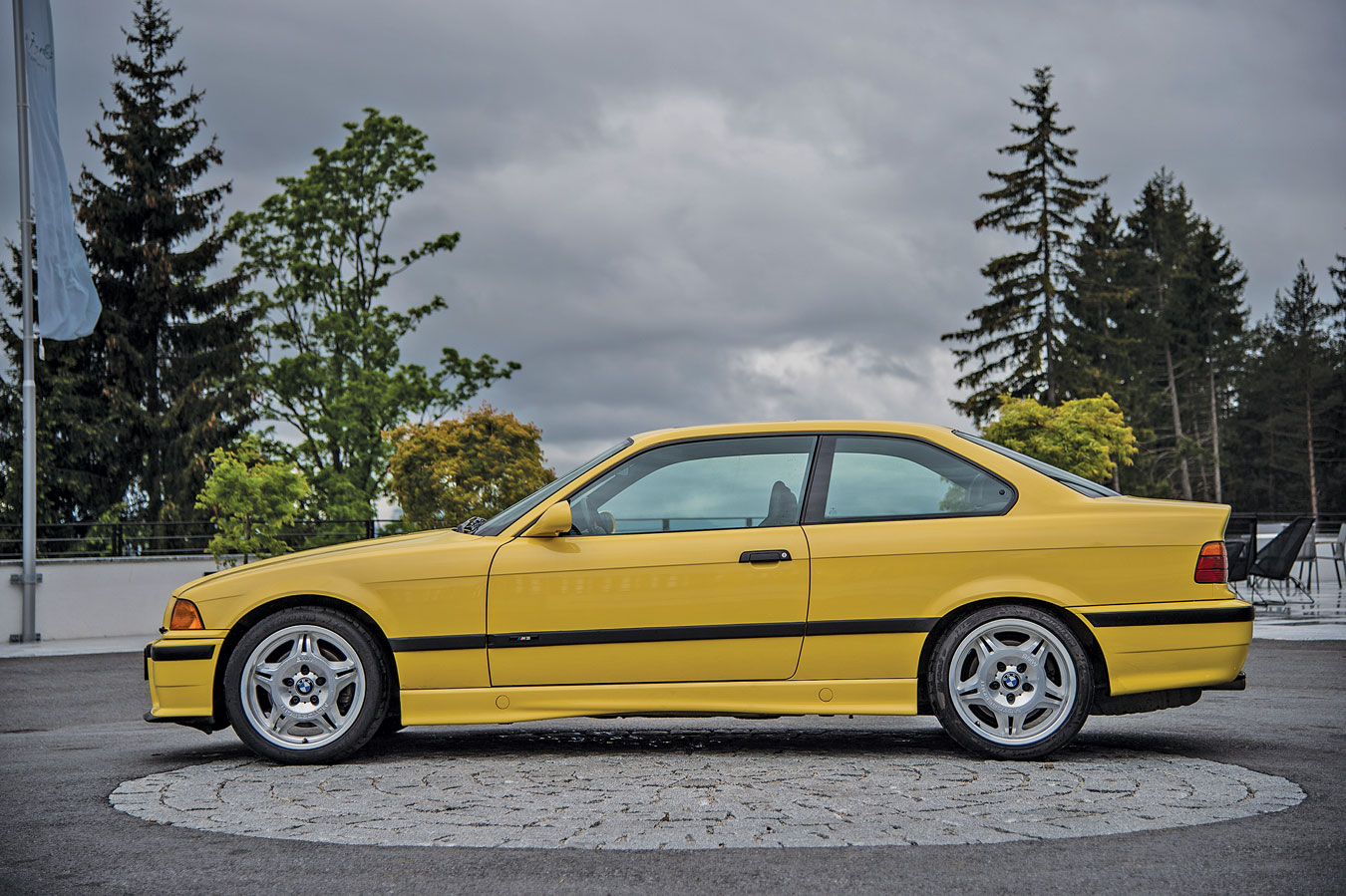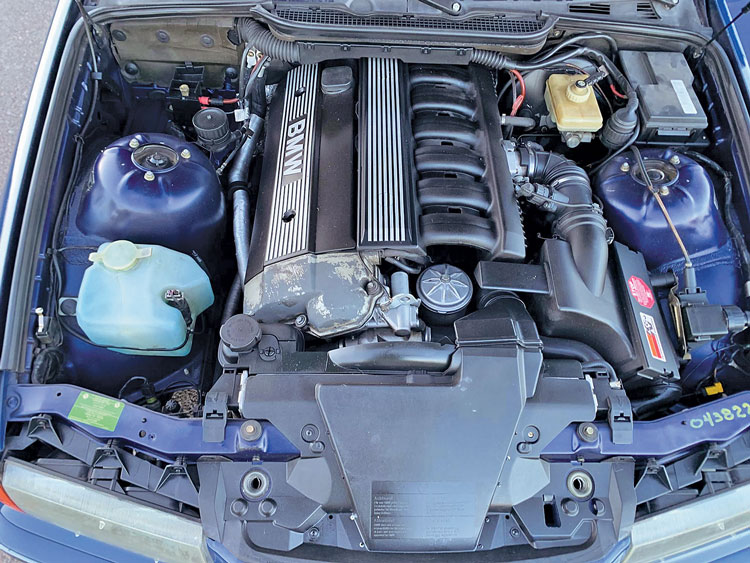
BMW is well known for building performance cars, but it was the E30-generation 3 Series of the 1980s that really put the German automaker on the map for affordable performance. When the succeeding E36-generation 3 Series was unveiled, BMW fans expected something spectacular.
What they got was not the lightweight, edgy sports sedan of the E30-era, but a larger, heavier design aimed at the upscale compact-executive-car market. Nevertheless, the E36 still offered competitive performance, no-drama reliability and understated good looks. This generation of 3 Series sold well, making the Car and Driver “10Best” list every single year it was available in America.
The E36 family tree
The E36 was based on a new platform that supported both the 3 Series and the Z3 roadster. The E36 line for the U.S. included a 4-door sedan, 2-door coupe, 2-door convertible and, briefly, a 3-door hatchback. The 318i and short-lived 318ti hatch had 4-cylinder engines, but most E36 models sold stateside boast BMW’s signature inline-6. These are composed of the 323i, 325i, 328i and the range-topping M3. Notably, the E36 was always naturally aspirated from the factory.
The 325i was made from 1992-95, carrying the 2.5-liter M50 engine with VANOS variable-intake cam timing. You can see a bulge at the front of the engine on the intake side for that hardware. For the 1996 model year, BMW raised displacement to 2.8 liters and called the new engine M52 in the new 328i. Both engines produced about 190 horsepower, but the 328i produces 210 ft-lb of torque, 29 more than the 325i. The 323i became the entry-level model, keeping the 2.5-liter engine, though detuned to 168 hp.
The one you want
The M3 models were the performance-oriented range-toppers, arriving in 1995 with the 3.0-liter S50 engine rated at 240 hp and 225 ft-lb. The S50 used the same cast-iron block as the M50 though VANOS was deleted and everything else was upgraded, from the pistons and rods to the cams and valve springs. The S50 lasted just one year in America, with 1996 models getting a U.S.-specific S52 engine. This displaced 3.2 liters and was rated at 240 hp and 240 ft-lb (meanwhile, M3s sold in other markets received S52 engines ranging from 282 to 316 hp). Manual and automatic versions were available.
The extra power is nice but an M3 is more than an engine, with upgraded brakes, suspension, steering, bodywork and interior. Importantly, you could choose from coupe, convertible and sedan versions. For collecting, you want the M3, because why wouldn’t you? There’s little point in another E36, save for a cheap daily driver.
When everything is right, any E36 is rock-solid on the road. While not an eager, tossable corner-carver like the E30, these over-tired cars stick to the road especially on modern rubber. Depending on the engine, power ranges from adequate to quite good. Inside, you can expect a reasonably sporting expression of comfort. The stock seats are well bolstered, but not tight, and soft enough to be kind to your hip bones.

Practical considerations
Given the age of every E36 at this point, mechanics have had ample time to notice what breaks and what doesn’t. For any example, plan on replacing the cooling system. The ’90s were an era of plastic radiators, which predictably results in cracks and snapped hose-attachment points. All E36 models have required 10-year/100,000-mile replacement items, including the flywheel, engine pulleys, rubber driveshaft disc, and the driveshaft center support bearing. Replace the plastic valve cover, shift bushings, and powertrain mounts at the same time.
Then there’s the VANOS system, which uses oil pressure to advance and retard the intake cam. You’ll have the valve cover off anyway, so go ahead and buy a VANOS rebuild kit. They’re cheap and easy to install, and virtually all E36s will need theirs serviced.
The downfall of E36 interiors is simply age. The cloth headliner covers a layer of foam that has long since crumbled into dust. The cloth sags and eventually rains that dust down on your head. If the headliner hasn’t already been replaced, you’ll be doing that soon. Pro tip: Clean the sunroof drains while you’re in there. And of course, all E36 models are headed for their 30th birthday, so other wear items like power-window assemblies will start asking for repair.
Finally, plan on freshening the entire suspension — from bushings to dampers. These cars have a reputation for eating ball joints for breakfast. You might as well get the full enjoyment out of the car, and a tight suspension is critical to an as-new driving experience.
This may sound like a long trouble list — and it is — but the good news is that none of it is particularly hard to do, and the parts aren’t expensive.

The market
Today’s marketplace for the E36 starts with Craigslist, but most owners are savvy enough to know they’ll get more on Bring a Trailer and other online auction sites. Some five to 10 examples sell through BaT nearly every month, so there are plenty to choose from. Typical prices for very good 323i/325i/328i models range from $10,000 to $15,000, or less for the 4-cylinder cars.
The fat part of the bell curve for the M3 is $15,000–$25,000 at the moment, which may seem high until you look at E30 M3 prices (now in six figures for the best cars). Or later E46 M3 models, which are also pricier. This puts the E36 right where it’s long been: in the sweet spot for an Affordable Classic. ♦